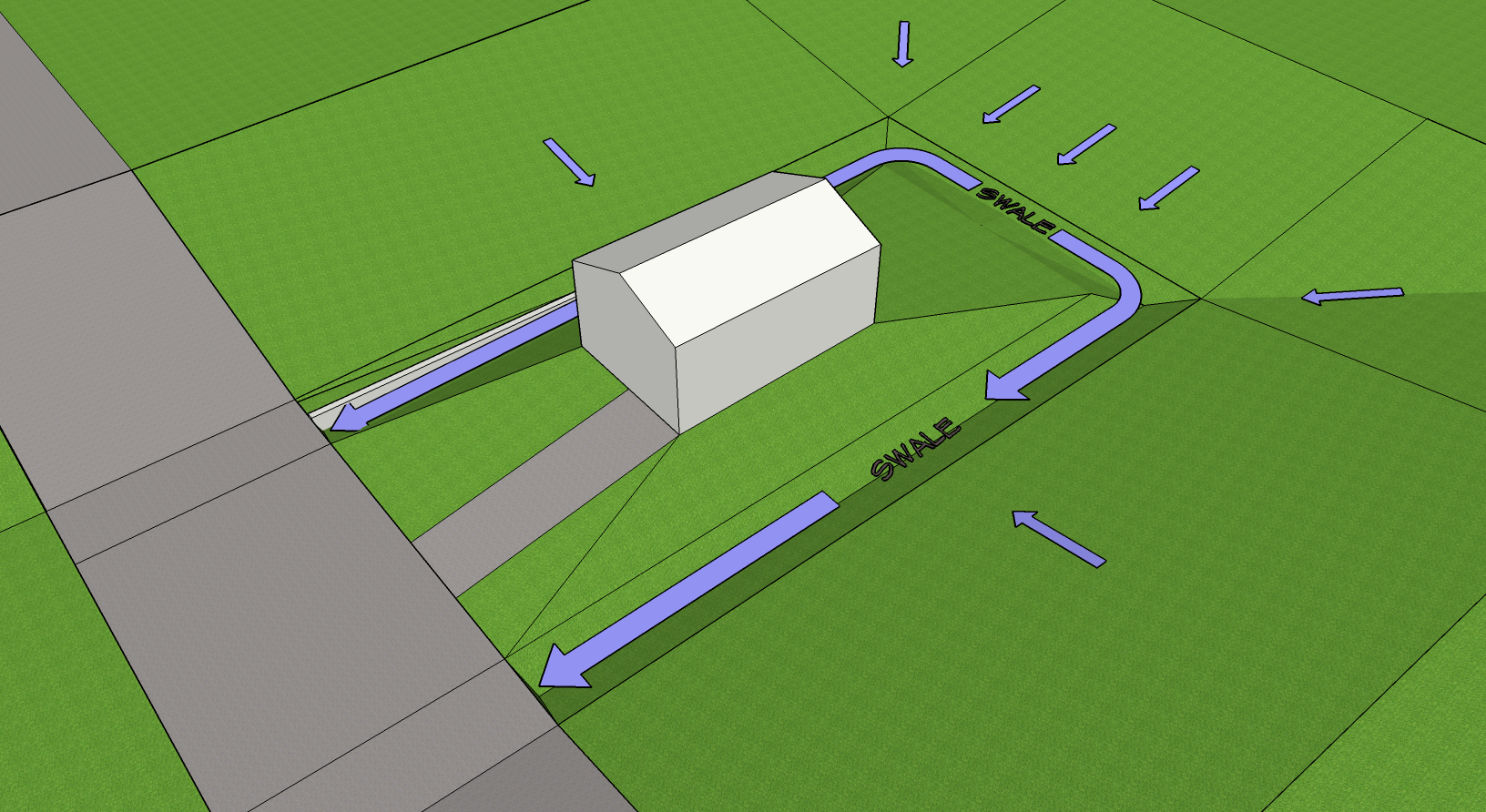How Grading and Landscaping Can Prevent Water from Getting into Your Basement
We understand how frustrating it is to discover a water problem in your basement after heavy rain. We want to give you the tools to help prevent this from happening again and the peace of mind that comes with knowing that the issue has been completely resolved.In this article, we will show you the landscaping options that can prevent water from getting into your basement as well as provide a real-life example of a property KG Landscape performed these fixes on.
How to Fix the Problem in 3 Steps?
- Consult with a professional to determine where and why the water is coming in
- Determine whether the landscaping is the cause of the current issues.
- Implement the chosen solution that best suits your needs.
The 3 Main Types of Drainage Improvement Landscaping
Each situation will have its own unique challenges, but generally we can break our most common outdoor drainage solutions into these three different categories/options:
1. Grading Improvements
Foundation grading
Correctly sloped grading around the home’s foundation is the most important factor in preventing water issues in your home. This involves installing a slope into the land around the home that allows gravity to send water away from the foundation. Click on our webpage here for more info about our
grading solutions
.

Proper foundation grading should include a minimum slope of 6” in the grading to send water away from the foundation within the first 10’ away from the house. The redirection of surface water will help prevent it from pooling near the basement walls and infiltrating the foundation. We’d also like to set the soil elevation directly against the foundation block about 6” below the bottom of the siding (if the existing site conditions allow for this).
Yard Grading
We can combine grading work that takes place around the foundation with additional yard grading that helps direct water even further away from the foundation to a place where water infiltration will not affect your basement.
Generally speaking, lawns and yards can be constructed to include a gentle slope away from the house that allows water to drain off the yard to its finally destination.
This consistent slope reduces water infiltration into lawn spaces near the home. Proper yard grading will also help prevent water from causing wet and mushy spots in the lawn after it’s been safely directed away from the house.
How much slope should you have in the lawn? Generally, a 2% slope in the lawn or roughly ¼” per foot is ideal for proper lawn drainage while still leaving the yard feeling relatively flat and useable.

The use of drainage swales is another example of a yard grading technique that can be used to improve lawn drainage. Grading swales are a pitched depression created by grading work that allows water to run from one area of a property towards another area. without regarding the yard entirely.
When grading the lawn and creating swales, we will take into account the current grade of a property and will use equipment such as a laser transit to ensure the yard grading and /or swale work is properly sloped and will direct water as intended.
2. Prevent Water Infiltration in Foundation Beds with Landscape Fabric & Rock
The next layer of protection that can be added after proper grading has taken place, is installing poly/non-permeable fabric and rock landscaping beds. The combination of poly fabric and rock serves as an extra layer of protection against water infiltration and prevents the new improved grade from erosion damage that might otherwise wash out soil and reduce the amount of slope over time.

A correctly graded property combined with rock beds and a poly non-permeable liner below will mitigate water intrusion as well as provide give a clean finished look to your landscaping. Plants can be added as well by cutting small holes into the fabric.
Can you use mulch on a waterproof landscape fabric? We tend not to install mulch on top of a poly liner because of the tendency of mulch to wash off the fabric during heavy rain events, exposing the liner below. Liners will also prevent the mulch from breaking down naturally in the soil overtime, which can excess buildup overtime after multiple layers of topdressing / re-mulching.
3. Underground Drainage Pipe Systems
Our most comprehensive exterior drainage solutions will include the installation of exterior drainage piping systems, that we categorize into 4 types, including;
- Drain tile
- French drains
- Underground down spout extension
- Underground sump-pump outlet drainage systems
The basic function of underground drainage pipe systems, is that they help reduce water infiltration into the soil by providing a direct pathway via a pipe for water to flow on its way to an outlet location and away from an area that wet soil could cause problems.

This triple-layered approach outlined above — including grading, poly fabric and rock, and drainage piping where needed, creates a robust defense against basement water intrusion, addressing both surface runoff and subsurface water infiltration challenges.
Would you like to see
a real life example of how we implemented these solutions on a project?
KG helped a customer implement the ideas and solutions discussed in the sections above. In this particular case, a homeowner located in Golden Valley, a suburb of Minneapolis, MN reached out to us about water intrusion into their basement










